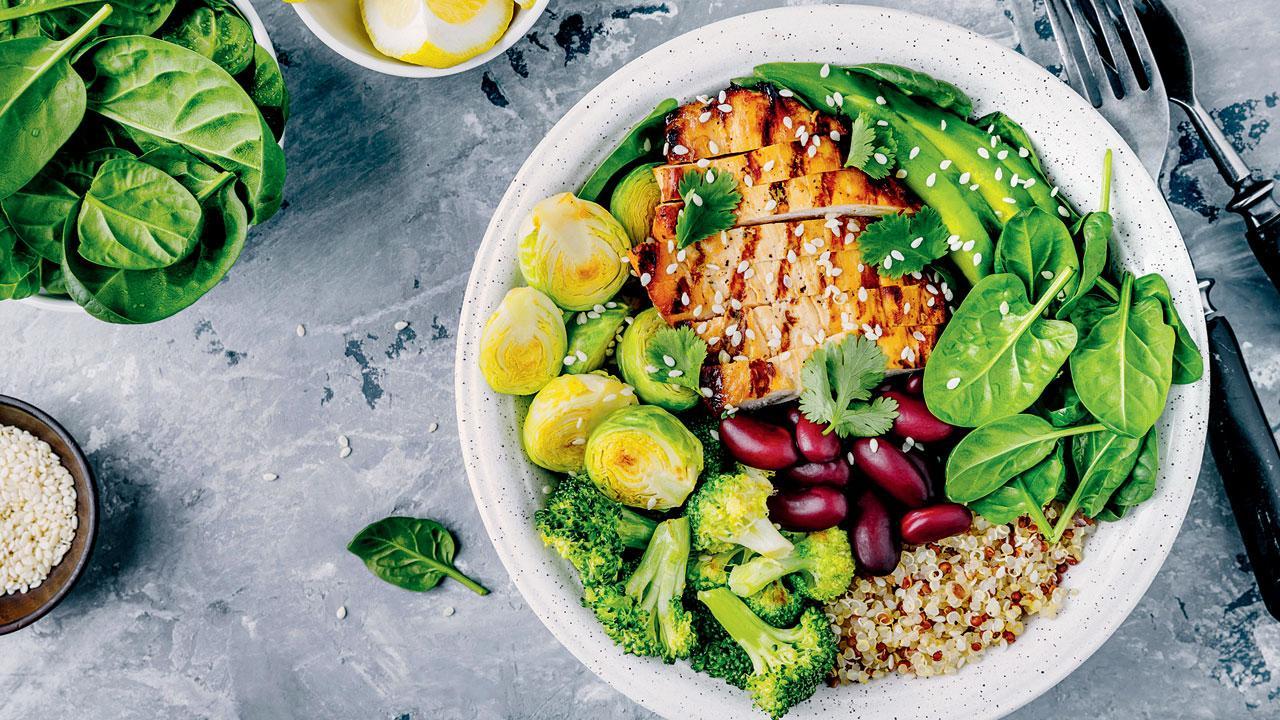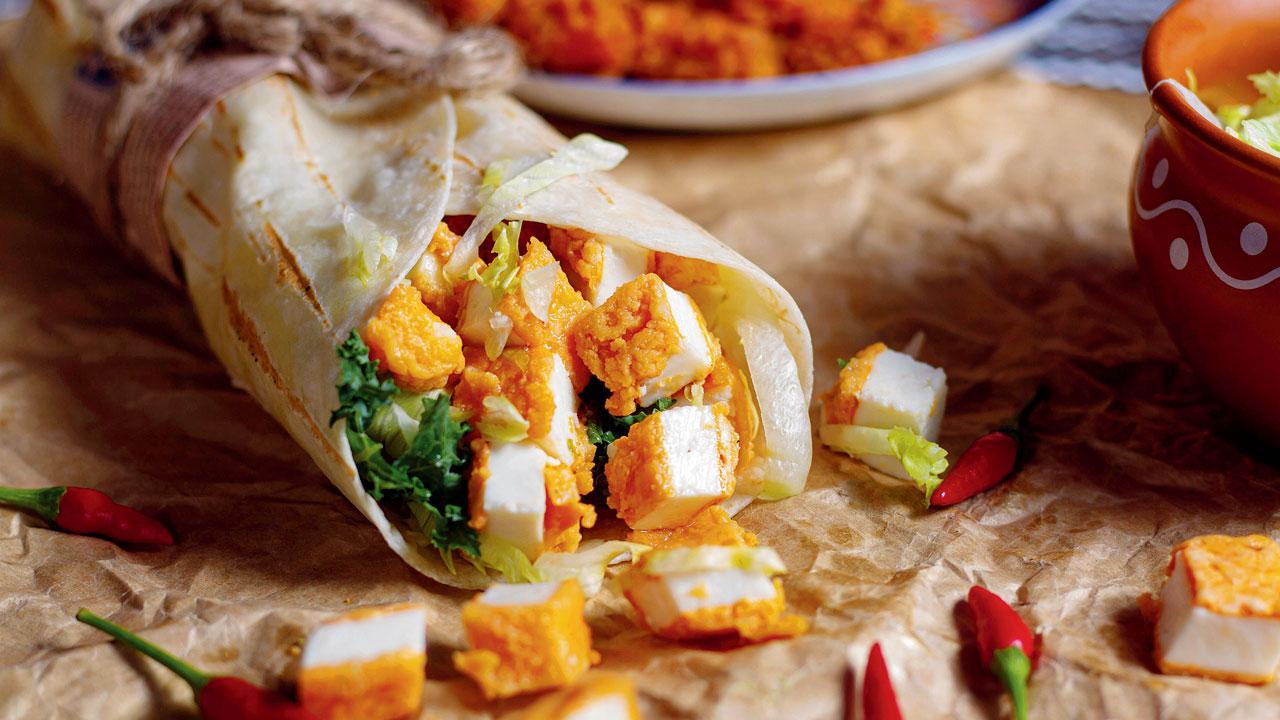After a fitness influencer tried dog food to up his protein intake, two nutritionists reiterate the need for awareness about healthy eating, with guidelines for different types of eaters to ace that balanced plate

Balanced bowl
From bizarre to banal, there’s barely any category of content the Internet can’t shock us with. And yet food and fitness stand out among groupings. So, when American gym nut Henry Clarisey tasted some oven-roasted beef by Kibbles ‘n Bits — dog food with bistro-style flavours — viewers showered him with over two million likes. Were they influenced? Or, just curiously surprised? With the way digital trends have been going, a “yes” for the former seems possible. Clarisey was found gagging in the video. He later said the dog food was hard to chew down and felt like bits of rock inside his mouth. The 21-year-old might not do it again for more pronounced muscles, but will other fitness freaks learn from his mistake?
ADVERTISEMENT

Clarisey tries dog food on camera. Pic Courtesy/Twitter
Divya Ahuja, a clinical and sports nutritionist, says that the virtual clutter of posts by enthusiasts often drowns out the voice of an expert. “It’s important for users to verify the source of any information that they plan to incorporate into their lifestyles.” Before laying the foundation for daily protein needs of humans, Ahuja stresses on nuances. She explains that since every body — irrespective of sex — is built differently, their need for protein varies. “If someone has a chronic kidney problem, they can’t have a protein-rich diet. If someone aims to lose fat and build muscle mass, they should increase their protein intake as per their workout intensity,” Ahuja adds, noting that generally males and females can consume 0.8 to one gm of protein for every kilogram of body weight. Seconding that, lifestyle educator Karishma Chawla reveals that in addition to right quantity, it’s vital to pay heed to the right quality of protein.
The muscle-mongering kind

Divya Ahuja and Karishma Chawla
Chawla says, “Keto diets are recommended with adequate protein which is also the case with any other kind of diet. While fitness freaks prefer keto diets to build muscles, I don’t overdo it. Sometimes, it can lead to toxin build-up.” She elaborates that people should be aware of the kind of protein that suits their gut. It shouldn’t give them indigestion, diarrhea or constipation. “Protein is never a danger unless you have a compromised body, especially gut,” the dietician reveals.
The meat-loving kind

Non-vegetarians can consume fresh chicken, fish, eggs and hydrolised whey isolate. But one should remember that these proteins can be optimally absorbed when paired with a serving of carbohydrates. Oats, jowar, quinoa and brown rice can improve absorption. On busy days, they can choose a wholesome shake — oats powder, whey isolate in water, skimmed or almond milk.
The no-animal-products kind

Keeping the Indian kitchen in mind, a vegan diet is quite doable. Pulses, tofu, nuts and seeds, quinoa, buckwheat and hemp protein powder are all good sources of protein. Ahuja shares, “A humble bowl of dal chawal can go a long way. It is healthy and nourishing as dal contains the amino acid that rice lacks, and rice makes up for the amino acid dal doesn’t include. They complement each other.”
The no-meat kind

Apart from what works for vegans, vegetarians can also reap the benefits of protein-rich dairy products — paneer, cheese, curd and yogurt. According to Ahuja and Chawla, vegans and vegetarians need to be more mindful about eating a balanced meal throughout the day. This is not as big a challenge for meat-eaters as two meals with proper meat portions can take care of their necessary intake for the day.
 Subscribe today by clicking the link and stay updated with the latest news!" Click here!
Subscribe today by clicking the link and stay updated with the latest news!" Click here!








